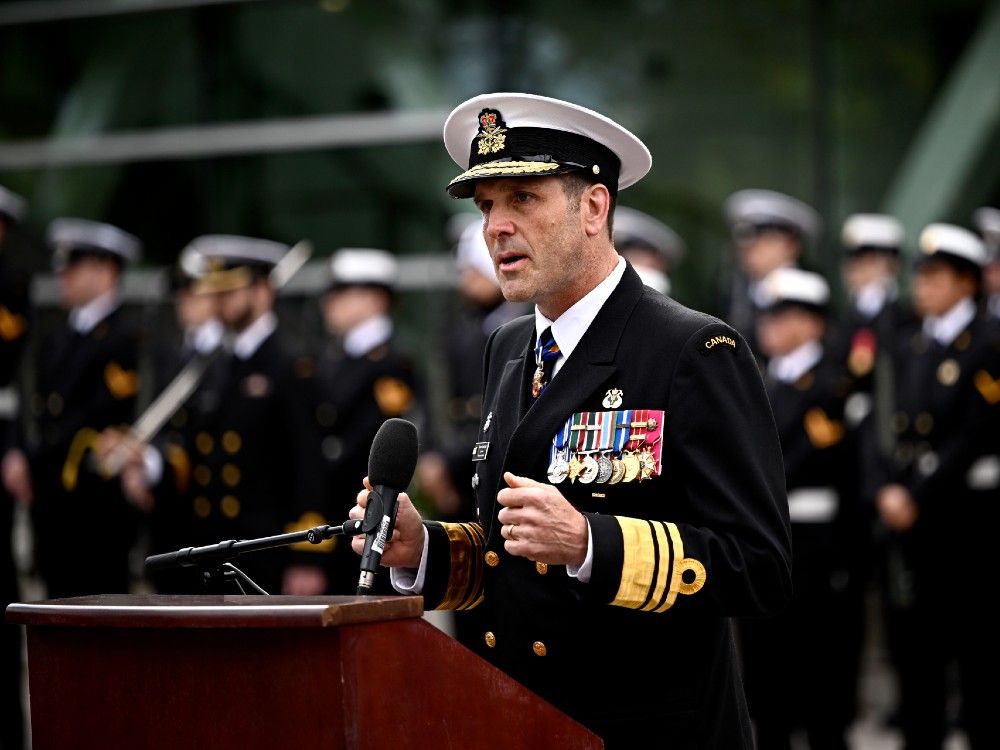Canada’s top sailor says he’s confident our navy can stop Russia or China if they send ships through the strategically vital Northwest Passage without asking for permission.
“We wouldn’t need the allies to come to our aid. We could deal with it ourselves,” said Vice-Admiral Angus Topshee.
“We have the capacity to deploy our ships up there right now to stop them.”
The country’s new Arctic and offshore patrol ships only carry a 25-mm cannon, but Topshee said that could quickly be supplemented with other weapons.
“They’re not intended to be front-line combatants,” Topshee said of the warships, dubbed AOPS (Arctic and offshore patrol ships). “They have everything they need for the missions that we anticipate that (they’ll) do. Were we to get into a wartime environment where we felt … they could come directly under threat, then there’s the capacity to install other weapons in sort of an ad hoc manner — very similar to how you would defend an army forward operating base.”
But it’s not worth the expense of adding more weapons to the AOPS now because the threat doesn’t warrant it, he said. “On both coasts we’re experimenting to make sure that these ships would have legitimate wartime roles if they needed to.”
On the east coast, the navy is focused on making sure the Arctic and offshore patrol ships have a full suite of mine counter-measures.
“The ship itself will never go into a minefield — 7,000 tons is not the type of thing you put into a minefield. But is a perfect platform for all of the sensors and effectors that you would deploy into a minefield to find the mines and disable the mines, working in concert with our clearance divers.”
On the west coast, the AOPS are more focused on anti-submarine warfare. The navy’s experimenting now with towed arrays that can detect submarines from thousands of kilometres away.
“That way you’ve got a ship that’s not got the weapons to defend itself, but it’s looking for a submarine that’s so far away the submarine doesn’t even know it’s being hunted,” Topshee said, noting the ship could feed information to the Royal Canadian Air Force to help it attack the sub.
While arrays can’t be towed in ice, he said the navy is eyeing sensors that could be rapidly deployed on the ocean floor and autonomous vessels that can patrol for submarines under the ice and report back quickly on what they find.
While the navy’s keen to use the Harry DeWolf-class ships to hunt subs, they still can’t embark with Cyclone helicopters.
“Right now, it’s got a hangar, it’s got a flight deck — that’s the easy part,” Topshee said. “The complicated piece is that, in order to be able to land that helicopter on the deck, secure it on the deck and then bring it into the hangar — there’s a couple of changes that have to be made.”






